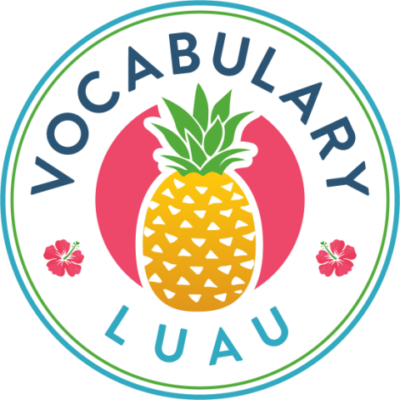Vocabulary photo albums are a great activity for multiple grade levels and content areas. They’re a great option for teachers who want to allow for multiple kinds of encounters with words and content.
In a vocabulary photo album, students collect images that represent target words.
They can get the images from photos they take themselves, from magazines or other print material, or from the internet.
They gather the images in photo albums, either analog or digital.
It’s straightforward, but there are some tips to make the experience more enjoyable and worthwhile in your classroom, so let’s dive in!
? How Do You Make a Vocabulary Photo Album?
There are two main ways to make vocabulary photo albums, analog (with paper! and real pictures!) and digital.
I’ve done both, so let’s look at the ways to do them.
Analog
To make an analog (paper) photo album, I’ve used a few different methods.
Inexpensive photo album:
I’ve bought inexpensive photo albums at the dollar store and slipped the photos into the sleeves.
I usually have several students share a single one if I do this method.
Sometimes, I create the album by putting in labels and have students all work to fill in the album. I’ve done that with colors, like this:
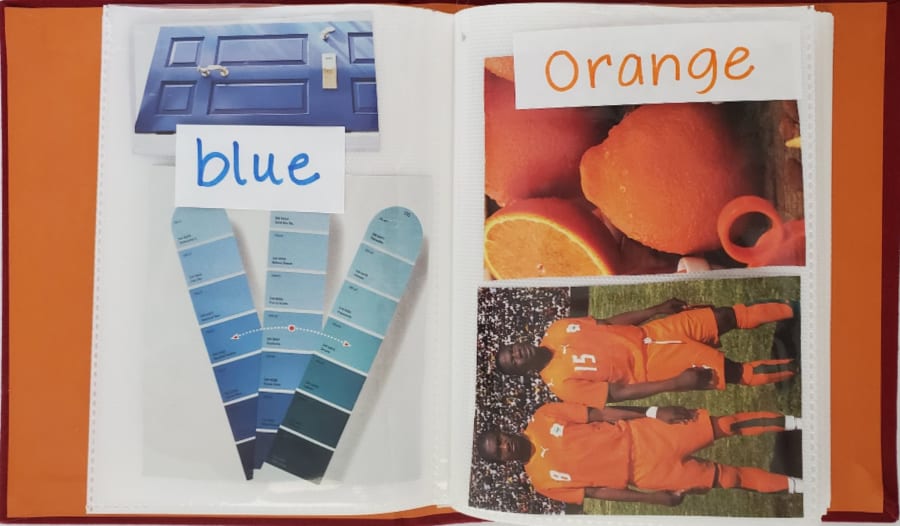
I also have students label the photo by either sliding a piece of paper in with the picture, or by using a label.
Here, they’re using a piece of paper with the word written on it:
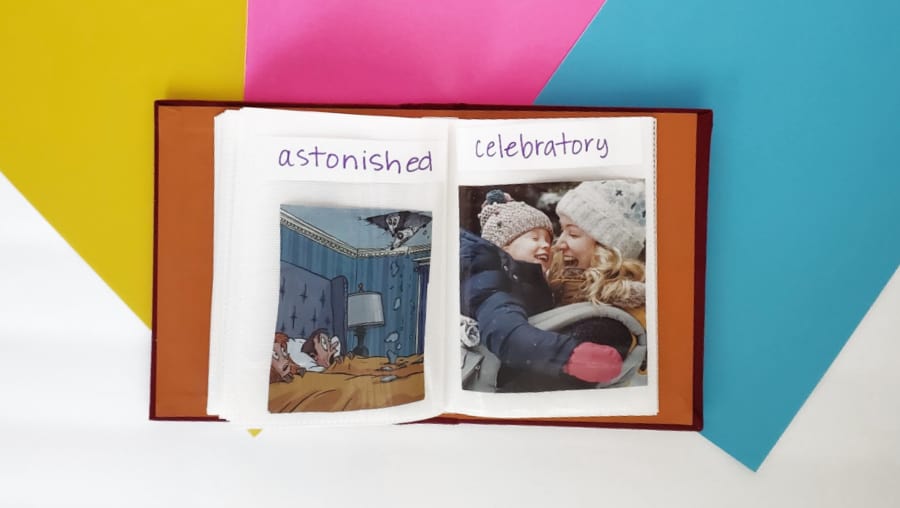
Here, they’re using my labeler:
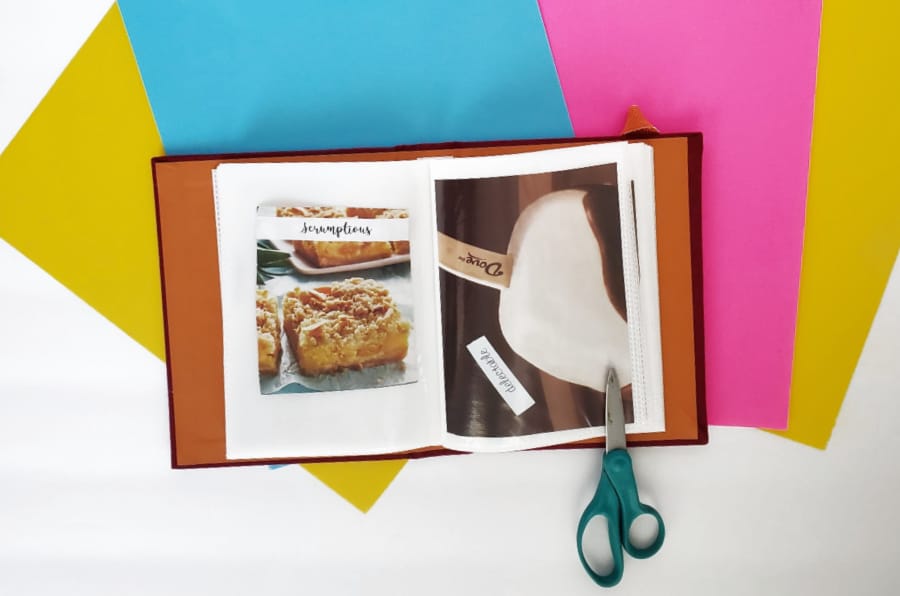
I only allow the use of the labeler when it’s a big project or I’m feeling generous because label tape is expensive!
Handmade:
Another thing that works is to have students glue the pictures on paper.
If you use cardstock and hole punch the sides, you can tie yard or thread or slide brads through the holes to form an album.
You can also use a more standard photo album or a regular notebook with or without page protectors.
Printable
A printable that serves as a photo graphic organizer can be a good fit if you’re wanting students to connect definitions to the word as well as the picture.
For this one, students can either find or create the image.
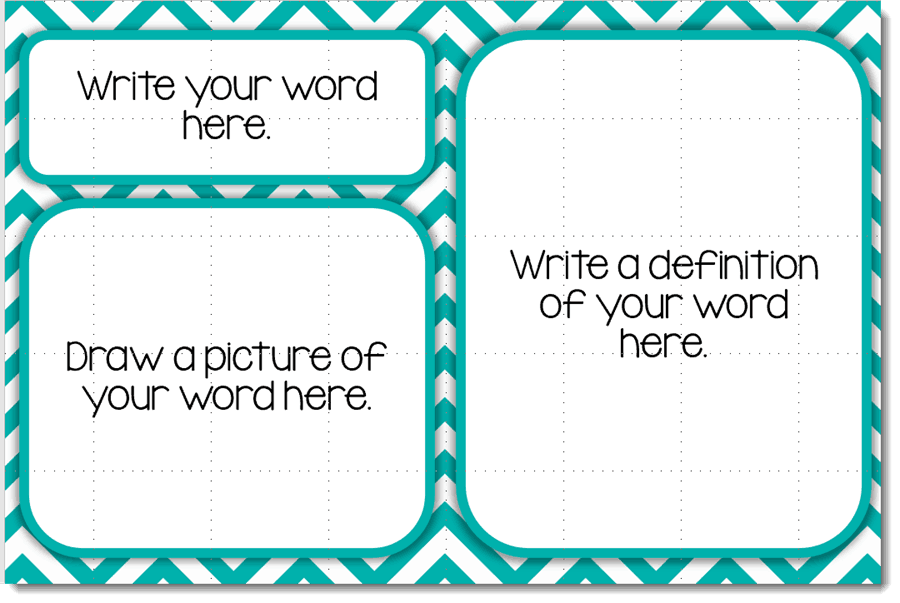
All of these work. It’s just a matter of what you prefer.
Digital
You can use sites like Padlet or Flipgrid to have students upload their images and add descriptions, definitions, or commentary.
I love using Jamboard, a free Google App.
Here’s one on biomes.
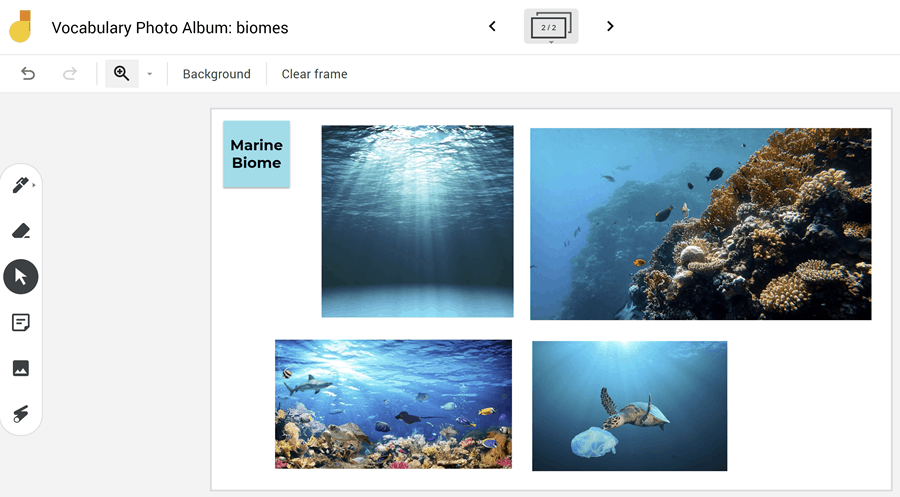
Jamboard lets you add boards, so I can have students create multiple frames (pages).
There are 16 biomes, so I can have 16 frames, one for each biome.
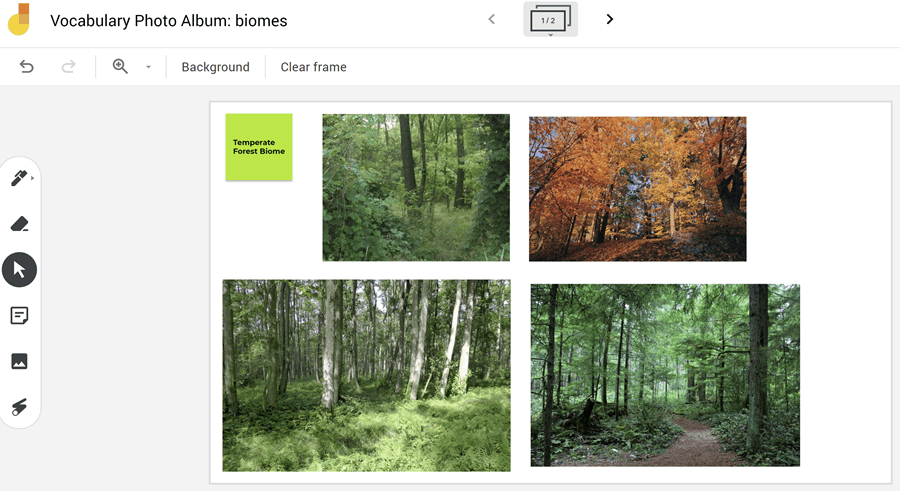
Students can add images directly from Google Images right in Jamboard.
Did I mention that it’s my favorite? Well, it’s my favorite.
? How Do You Use a Vocabulary Photo Album?
You can use the vocabulary photo album activity to allow students to make deeper connections with words, to find multiple examples of a word to explore synonyms or connotations, and to cement understanding.
Let me show you how!
In the color example I showed up above, students are finding multiple examples of a target color.
I can have students find examples of the word itself. This can be great for improving word recognition.
In the example below, students are given a category of words (here, it’s parts of speech), and they have to find examples of actual words, as opposed to images.
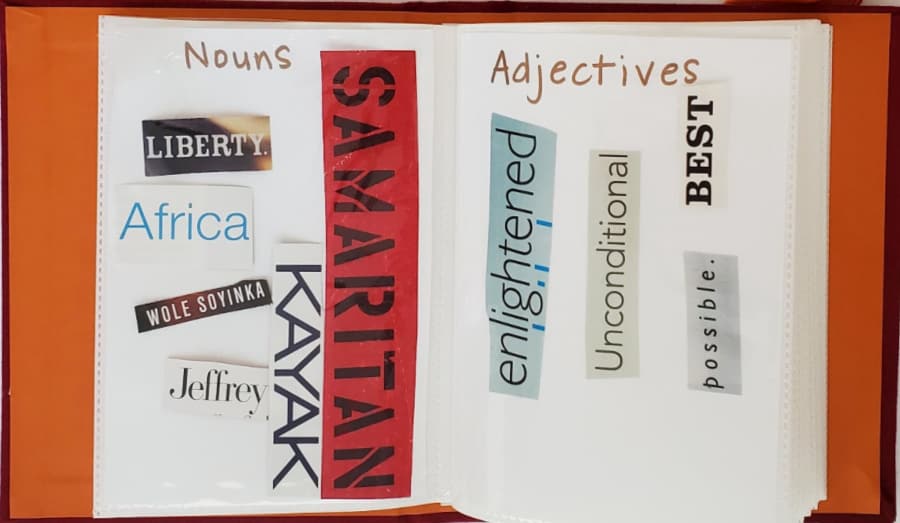
Similarly, I can give them the word and have them find examples of it, like they did for the word “house” here:
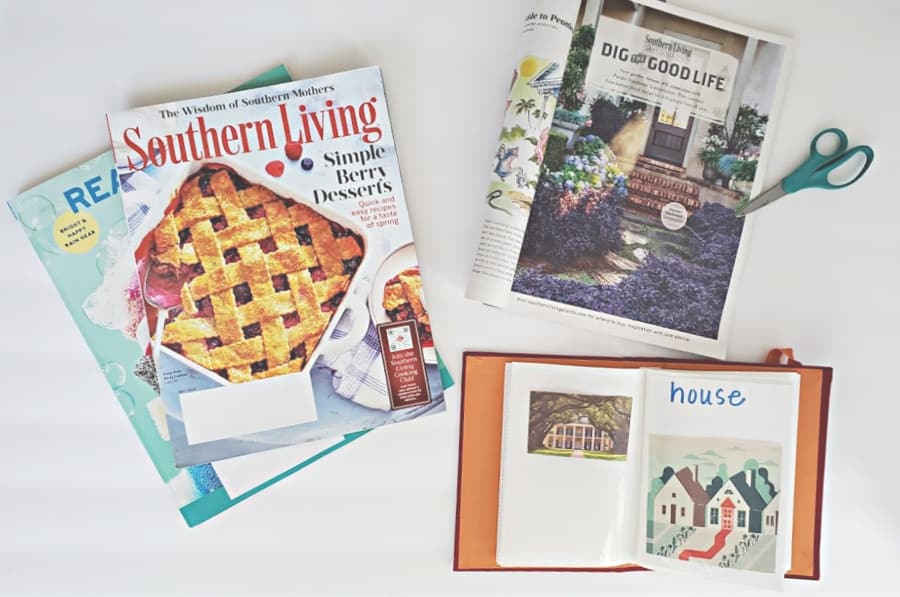
It seems like an elementary activity, but it works beautifully in secondary classrooms as well.
In this example, I gave students a target adjective, and they had to find things that could reasonably be described with this adjective.
This example gave me chills.

Another option is to give the students images and have them match them to vocabulary terms. I did that with this biomes example:
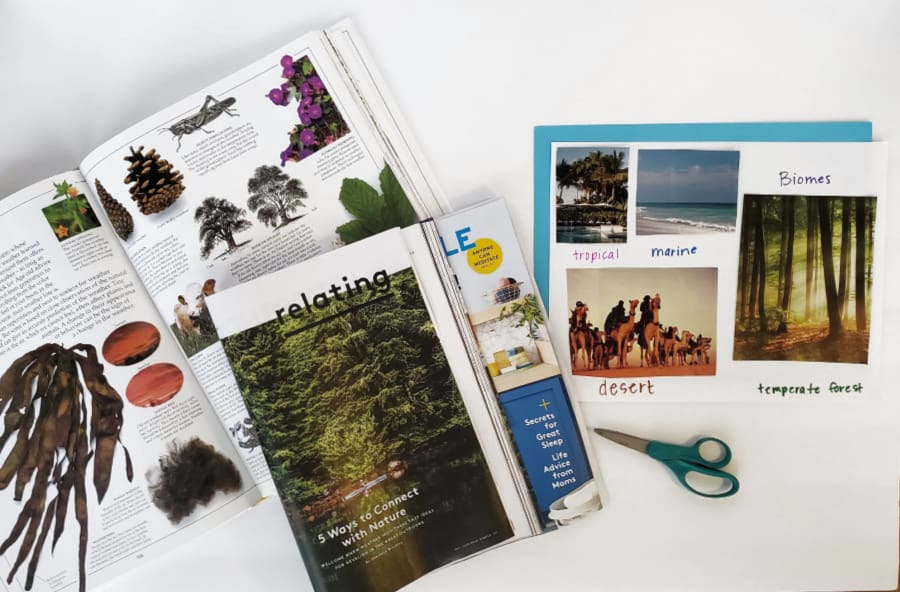
This works wonderfully well for teaching shapes and improving students’ connection between shape words and the shapes found in their “real” lives.
Nothing is more “real life” than cookies.
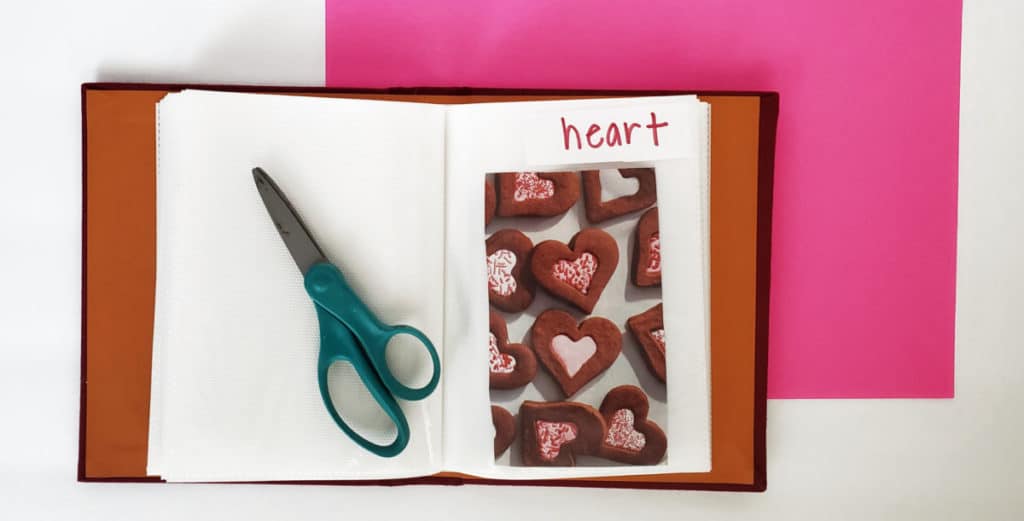
In the example below, students are finding examples of lifestyle choices characters would make and justifying them with a word describing the connection between the choice they made and the character.
The target vocabulary words here were “acquisitive” and “opulence.”
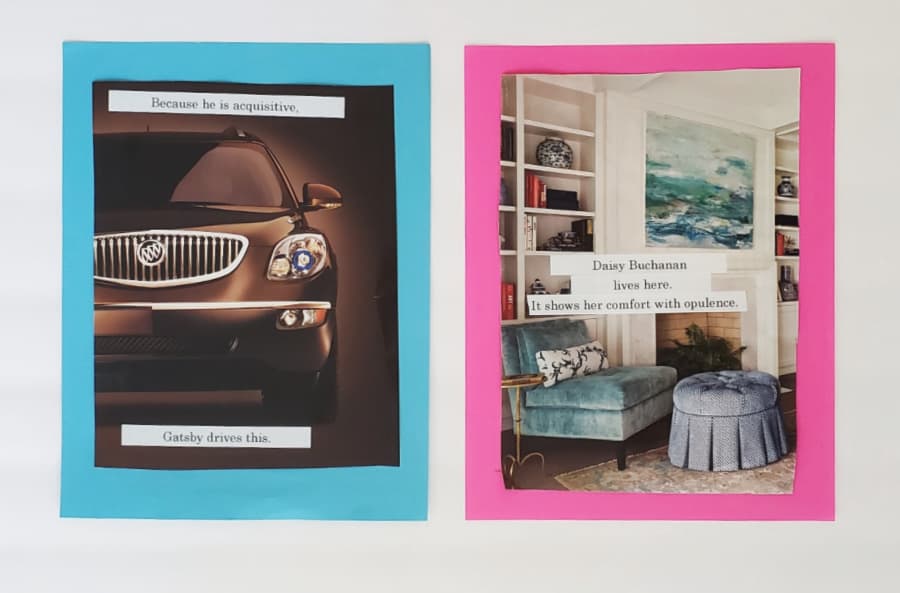
Another character option is to give them characters and have them find pictures of people they think look like how they imagine the character to look.
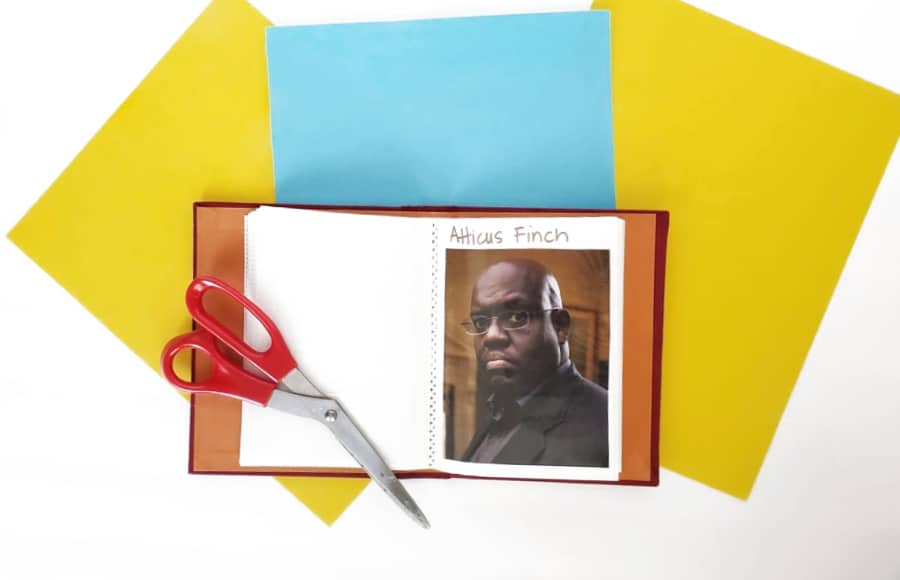
I like this activity because it helps struggling readers or readers who are moving into books with few or no pictures to make that picture in their minds.
? Where Do You Get the Materials for the Vocabulary Scavenger Hunt?
As I mentioned earlier, I get the little albums at the dollar store.
I get the magazines in a few ways. I ask friends for their old magazines.
I even ask my allergist! Doctors have lots of magazines in their waiting rooms.
Some magazines lend themselves to great images, so if I see those on sale, I grab a subscription.
If the magazine is one that has some good images but some inappropriate material for students (Vanity Fair is one of these – great shots, but some PG-13 stuff), I’ll cut the pictures out myself and store them in a baggie.
This is a great Netflix marathon activity!
For internet sites, I’ll have students use these sites that have quality copyright-free photos.
I searched “chemistry” on both sites, so you can see the kinds of results you get.
Unsplash

Pixabay

Truly, kids grow to understand the differences between words better when they search for “graduated cylinder” and realize that most pictures they get are actually beakers.
The other materials I already have (glue, scissors, paper).
I do find that it can help to use colored paper to back the images. It can make the words show up a little more.
You can probably tell that that would have helped in some of the examples of mine!
? What Do You Do with the Vocabulary Photo Albums?
I keep some of the albums for review. This is especially appropriate for the content-based ones like the biomes example above.
Sometimes we give them to lower grades or other classes. That works with the ones like colors and shapes.
Sometimes the kids take them home.
Digital ones live in the cloud, and I’ll pull them out for review, writing prompts, or inspiration.
For example, I might take a Jamboard vocabulary photo album and ask students to create three quiz questions about one of the frames.
? Wrapping Up:
I hope these examples have given you some ideas of how you can use the vocabulary scavenger hunt in your classroom.
Frequently, the students’ thinking when doing this just blows me away.
I love the flexibility of ages, content, and even sophistication of the idea itself.
It’s amazing to me that the same activity that has students looking for shapes and colors can engage students in deep consideration of exactly what will represent a very abstract concept like “unwanted.”
That can be hard to do, and it’s essential if they’re truly going to own that word.
